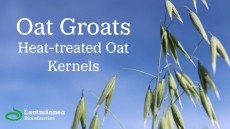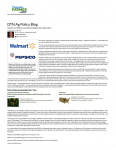More work needed on American whole grain message
American consumption of whole grains is up 20 percent since changes to US dietary guidelines and the introduction of the Whole Grain Stamp packaging symbol in 2005, said the research organization. However, whole grain consumption still stands at only 11 percent of total grain consumption – a long way off the dietary guidelines established in 2005 recommending three servings of whole grains per day and that at least half of all grains consumed should be whole.
The NPD Group presented its findings – part of its ongoing National Eating Trends survey – at the Make (at least!) Half Your Grains Whole conference in Virginia last week, which was organized by Oldways, a non-profit organization that promotes science-backed healthy eating, and the Whole Grains Council (WGC).
Despite continuing low dietary uptake of whole grains, the WGC has welcomed the findings as concrete evidence of a shift in the right direction.
WGC program manager Kara Berrini said: “Increasingly, consumers email us asking us why certain products don't have the Whole Grain Stamp. The Stamp makes shoppers feel more confident they're getting the whole grain their families need.”
The Whole Grain Stamp can be used on any food product as long as it contains at least 8g (or half a serving) of whole grains per serving and it currently appears on over 2,500 products across seven countries.
Market trend
The group’s findings add weight to research released by market research organization Packaged Facts last month, which called the move toward whole grain foods “a major trend rooted in sound nutritional science.”
NPD Group's Joe Derochowski said: “A double-digit increase in whole grain consumption is compelling and indicates whole grains are moving into the mainstream.”
Conference attendees also heard from Lisa Mancino of the USDA’s Economic Research Service, who presented evidence that the price gap is shrinking between whole and refined grains, thereby reducing the economic barrier to choosing whole grains in difficult economic times.
In support of this, the Whole Grains Council unveiled its own supermarket-based product comparison survey, which it said showed that in some food categories, and cereals in particular, whole grain choices are now less expensive than refined grains.
Whole grains are found naturally in products such as whole wheat, oatmeal, popcorn and brown rice. They consist of any grain that has retained its starchy endosperm, fiber-rich bran and its germ after milling.
As well as providing high levels of fiber, whole grains provide vitamins, minerals and antioxidants. They have also been shown to help reduce the risk factors for a number of diseases, including heart disease, cancer and diabetes, as well as playing a part in weight control.














